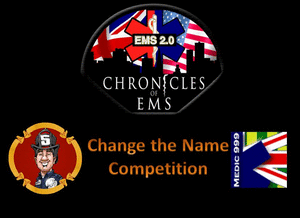In the popular and acclaimed JEMS article Experts Debate Paramedic Intubation, there were a few key points made that I would like to elaborate on, as well as provide some of my own insight from the research I have come across.
Key Point 1
Experience should be maintained in a number of manors:
- Operating room rotations
- Mannequin scenarios (without the dummy supine on a table)
- Cadavers if possible
Dr. Bledsoe: Do you feel there’s a role for RSI in the prehospital setting? Dr. Wayne, I know your program has decades of success with RSI. What do you think?
Dr. Wayne: Although there are no nationally defined indications for the use of RSI in the field, we at Whatcom Medic One believe that RSI is indicated for any patient in whom there’s a need to control an “uncontrolled” airway. This may include depressed GCS score, excess secretions, hypoxia that may be correctable, ventilatory fatigue or central nervous system depression with or without secondary respiratory depression.
Dr. Tan: I believe there is, but it must be in the right context with requisite oversight and extraordinary training. I oversee more than 100 paramedics in my system, yet only 10 of them have RSI privileges. They’re required to obtain critical care certification, attend ongoing training sessions with me every 12 weeks, attend annual specialized training courses and undergo 100% audits of their critical care trips. It’s a strenuous and time-consuming process but one that can’t be overemphasized given the complexity and danger inherent to RSI. I certainly don’t believe RSI should be a “routine” part of any standing orders, as there is nothing routine about it.
Dr. Wang: I think RSI should be restricted to the aeromedical setting for use by critical care flight nurses and/or flight medics for the reasons I’ve previously detailed. I really challenge those medical directors who currently allow RSI and promote its use in other systems. Although I applaud their efforts and attention to quality improvement and training, they still equate successful intubation with a positive outcome. As Dr. Eckstein said, in the absence of prospective RCTs, we can’t assume that prehospital RSI has actually improved outcomes for our patients.
Dr. Eckstein: RSI is potentially useful where paramedics have exceptional skill, training and medical oversight. Unfortunately, this is a tiny fraction of EMS agencies. If we replaced the “I” (intubation) with “A” (airway—Combitube, King, etc.), this might relieve much of the angst over prehospital RSI.
- Is there a risk for aspiration?
- Is the patient ventilating on their own?
- Is the patient oxygenating on their own?
- Is the patient conscious?
- How difficult will this ETI attempt be?
- What is my backup plan?
- Bag-valve mask (possibly with an OPA/NPA)
- Combi-tube
- King LT/LTD
- Laryngeal Mask Airway
Dr. Bledsoe: Are the alternative airway devices (e.g., King LT, etc.) good enough for prehospital airway management?
Mr. Gandy: Yes. The studies have shown that excellent ventilation can be achieved with these devices.
Key Point 3
Mr. Gandy: The biggest problem is inadequate training and practice in airway evaluation, such as using the Malampatti or Cormack-Lehane criteria; using aids to intubation, such as bougies; the BURP maneuver; alternative laryngoscope techniques, such as the “skyhook” technique; and a good assortment of alternative airway devices, including either GlideScope or AirTraq. Ventilation should be emphasized over intubation, and extensive practice with BVM ventilation should be required.
Malampatti scoring is done by having the patient stick out their tongue. The difficulty of the proceeding ETI attempt can be gauged by the visibility of the oropharynx.
Cormack-Lehane Citeria is utilized with direct laryngoscopy. This is done by visualizing the vocal cords and making note of how much of the opening is visible:
- Grade 1, visualization of the entire laryngeal aperture;
- Grade 2, visualization of parts of the laryngeal aperture or the arytenoids;
- Grade 3, visualization of only the epiglottis; and
- Grade 4, visualization of only the soft palate.
BURP Maneuver - Backward, Upward, Rightward, Pressure of the larynx.
Don't worry if you don't understand the picture above. It is just a step by step of the BURP maneuver. Basically you place your fingers on the palpable cricoid ring of the patient. Push towards their posterior, and slightly towards their right. This should bring the trachea and it's structures to the best point of view during direct laryngoscopy.
"Skyhook" - I believe Gandy is referring to what my peers and I call the "fish hook" maneuver. This is reserved for the more hefty patients that may be hard to intubate.
This is a two person procedure. One person is dedicated to laryngocopy, and the other will direct person 1, visualize the vocal cords, and pass the ET tube.
Person 1 - With Laryngoscope and a Macintosh blade
- Straddle the supine patient
- Hook the blade into the mouth
- Pull back, keeping the blade off of the teeth
- Make adjustments based off person 2's direction
Person 2 - With appropriately sized ET Tube
- Position yourself at patient's head
- Direct person 2 until the vocal cords are visible
- Pass ET tube
I spoke about the Glidescope in my post Video Laryngocopy. Go check it out.
Key Point 5








.jpg)







